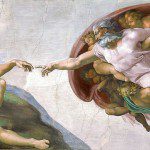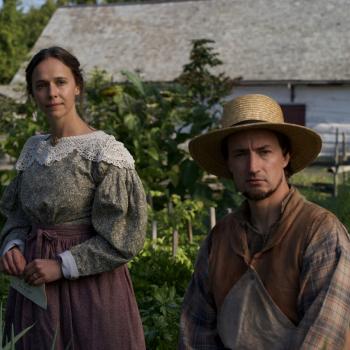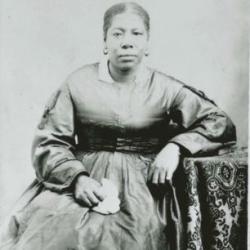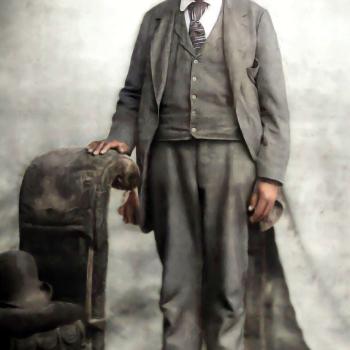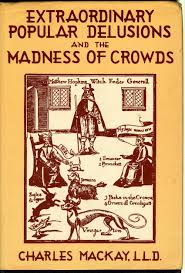
“A conservative is someone who stands athwart history, yelling Stop, at a time when no one is inclined to do so, or to have much patience with those who so urge it.” (
I was powerfully reminded of that famous early quotation from the late William F. Buckley while reading the following two articles:
- Deseret News: “What the U.K.’s explosive Cass Review means for gender medicine in the U.S.: The report is a gauntlet thrown down to the Biden administration and organizations supporting controversial treatments for children”
- National Review: “A Damning Indictment of Gender ‘Affirmation’: A new NHS report concludes that youth gender treatments are ‘built on shaky foundations.’”
Apropos of the great Mr. Buckley, by the way, and in view of a vigorous recent exchange between me and one of the commenters here — which, you may trust me on this, was (as it always is) a dispute between Truth (me) and Error (the Other) — I call your attention to a 2017 article that I came across, a few days ago and by sheerest chance, on Politico: “How William F. Buckley, Jr., Changed His Mind on Civil Rights: The man who boasted he purged the conservative movement of ‘kooks’ and bigots was once a strong defender of racial discrimination—even violence. What changed?”

On the time-honored principle that I rush in where angels fear to tread, I will now post yet again — see my previous efforts here and here — on the question of Brigham Young, racism, Latter-day Saints, and “slavery” in early Utah Territory. As a result of my prior two posts on the subject, my attention has been called to an excellent article: Christopher B. Rich, Jr., “The True Policy for Utah: Servitude; Slavery; and ‘An Act in Relation to Service,’” Utah Historical Quarterly, 80/1 (Winter 2012): 54-74. I was pleased to see that Christopher Rich’s well-informed and balanced essay reaches conclusions that I had intuited already and, thus, provides support for my position. Here, I share four quotations from it:
Over the years, many historians have asserted that after receiving this new authority, the Utah Legislature drafted “An Act in Relation to Service” in order to legalize slavery in the territory.2 However, the reality is far more complicated. In fact, if one carefully examines the text of the statute in its proper context, it becomes clear that this legislation did not legalize chattel slavery as it has been alleged. Rather, the act was an attempt to find a practical compromise between three contradictory goals. The first of these goals was to abolish the status of “slave,” meaning a human being who is legally reduced to a chattel, or a piece of personal property. However, the second goal was to honor the property rights of a small number of Southern slaveholders who brought their slaves into Utah while also ensuring that these bondsmen would be subject to the influence and authority of the community at large. Finally, the third goal was to uphold the appearance of neutrality towards slavery in order to strengthen a bid for statehood. In order to accommodate these goals, the law instituted a scheme of quasi-indentured servitude and gradual emancipation for African slaves who immigrated to the territory with their masters. In fashioning this system, the Utah legislature was hardly treading new ground. State legislatures in the northern United States had wrestled with the problem of abolishing chattel slavery while also defending property rights for more than sixty years, and had come up with similar solutions. Indeed, it is evident that the provisions of “An Act in Relation to Service” were largely based upon these northern statutes, particularly those of Indiana and Illinois. Like the practices that developed in these states, Utah’s indenture system was almost certainly a form of “involuntary servitude” despite the legislature’s requirement that African American servants give nominal consent to the arrangement and receive compensation.3 Nevertheless, it remained distinct from chattel slavery and a step forward in the gradual emancipation model. . . .
[T]he very essence of chattel slavery [is] the premise that in most instances, an African slave was legally equivalent to livestock or a piece of furniture and therefore could not lay claim to any particular set of rights.
One critic of the Church and of Brigham Young, commenting here, has suggested that, to the extent that the 1852 “Act in Relation to Service” appears not to have agreed with the critic’s view, which is that Brigham Young favored chattel slavery, it was passed against Brigham’s wishes. But this appears not to be the case:
At the end of 1852, Governor Young declared himself perfectly satisfied with “An Act in Relation to Service,” and added that if similar measures were adopted around the country, it could alleviate the growing national divide over the question of slavery. He assured the territorial legislature that:
not until the subject of servitude and the relation existing between Master and Servant shall be understood and acted upon, and carried out by all parties on a righteous principle, may we expect quiet in our Nation’s councils. When southern Statesmen shall learn that Africa’s sons and daughters are not goods and chattels, and will attach unto them, that humanity and moral accountability to which they are entitled…and northern fanaticism learn to know that “Canaan” shall be servant of servants unto his brethren . . . If [abolitionists] wish to do [slaves] a kindness . . . let them purchase them into freedom, and place them in their own household, where they can partake of their kindness, wisdom, and intelligence. . . . Happily for Utah, this question has been wisely left open for the decision of her citizens, and the law of the last session, so far proves a very salutary measure, as it has nearly freed the Territory of the colored population; also enabling the people to control all who see proper to remain, and cast their lot among us.
And, finally, here is a brief discussion of the one court case that arose out of the 1852 Act:
On June 16, 1856, Edwin D. Woolley filed a complaint before Judge Elias Smith against another Mormon named Williams Camp. Woolley was a prominent local businessman, a confidant of both Joseph Smith and Brigham Young, a Mormon bishop, and finally a member of the territorial legislature which had drafted “An Act in Relation to Service.” He had also been raised a Quaker in Pennsylvania before joining the LDS church, and presumably had grown up with a deep abhorrence of slavery. Woolley contended that Camp and several associates had kidnapped a “negro named Dan” . . .
Several points of interest arise out of the trial. To begin with, it is evident that some members of the Mormon community (largely of Southern extraction) had begun to rely on “An Act in Relation to Service” in order to protect their interests in the labor of African American servants. Others, including Edwin Woolley and Brigham Young, used the law as a means to defend those same servants from abuse by their masters.
And yesterday, by sheer chance (?) while looking for something completely unrelated, I ran across the following:
May 1998, just days before the 20th anniversary of the 1978 revelation, I was in Ghana and then South Africa gathering stories with Dale LeBaron, who was mission president in South Africa in 1978. Since then, Dale had made it his life’s work to gather the stories of as many of the early African pioneers as possible before they died. I was with him on this last trip to record some important stories on video. My first day in Ghana happened to be the wedding of William Billy Johnson’s son who is named Brigham Young Johnson. Billy Johnson is the man featured in the old seminary video showing him tuning into the BBC and hearing the announcement on the Priesthood revelation in 1978. When he learned that I was a descendant of Brigham Young, he could hardly contain his excitement that I was brought to Africa on the day of his son’s wedding. Billy took us on a tour of the old Cocoa Shed “church” in Ghana where they held their first meetings long before the missionaries got there. At one point he stopped and said that it was here that Brigham Young appeared to him during a very hard period of trials and persecution and said to him something like . . .” Buck up Johnson, help is coming. Buck up.”
Marian (Marcy) Brown
2nd great granddaughter of Brigham Young
To which Mary Ellen Elggren, who was at the time the Chairman of the Board of Directors of the Brigham Young Family Association, responded, “May 2018, Brother Brigham undoubtedly is still on the job.”
I had already written here earlier about the incident involving Billy Johnson:
Young’s descendants, including Elggren, believe their prophet was prophesying a “temporary ban, and could foresee the future when it would be removed.”
“Brigham said the day would come when black members would receive all the blessings they were denied,” Elggren says, “ — ‘and more.’”
So when LDS Church President Spencer W. Kimball reported receiving a “revelation” on June 1, 1978, ending the priesthood prohibition (it was announced a week later), Young’s descendants were not surprised. After all, June 1 was their ancestor’s birthday.
At least one descendant believes Young was working for the change from, well, heaven.
Some years ago, Marcy May Brown, who is a great-great-granddaughter of one of Young’s wives, went to Africa to film a documentary about the history of black Mormons.
In Ghana, Brown met some LDS converts who joined the Utah-based faith even before 1978. One of them, Billy Johnson, told the filmmaker the pioneer leader came to him in a vision and said, “Buck up, Billy. Help is coming.”
The African Latter-day Saint even named his first son “Brigham Young Johnson.”



